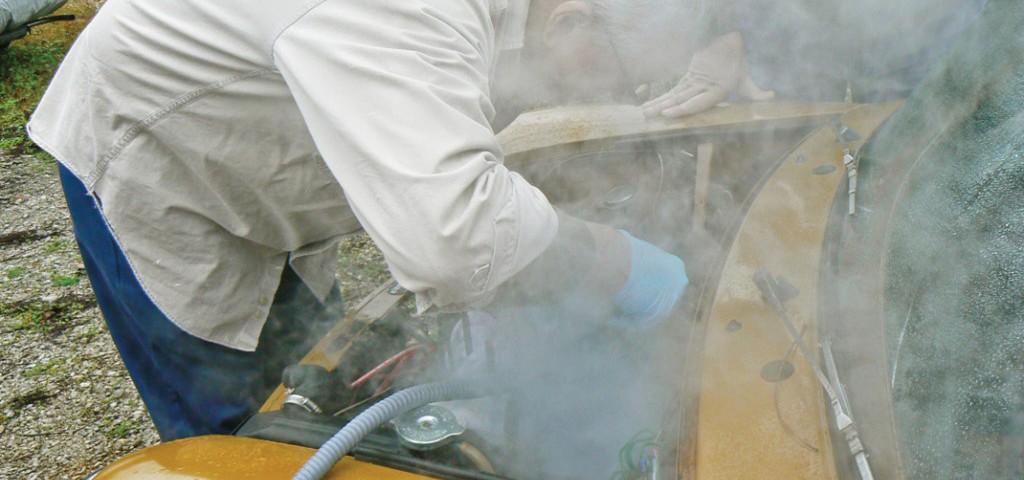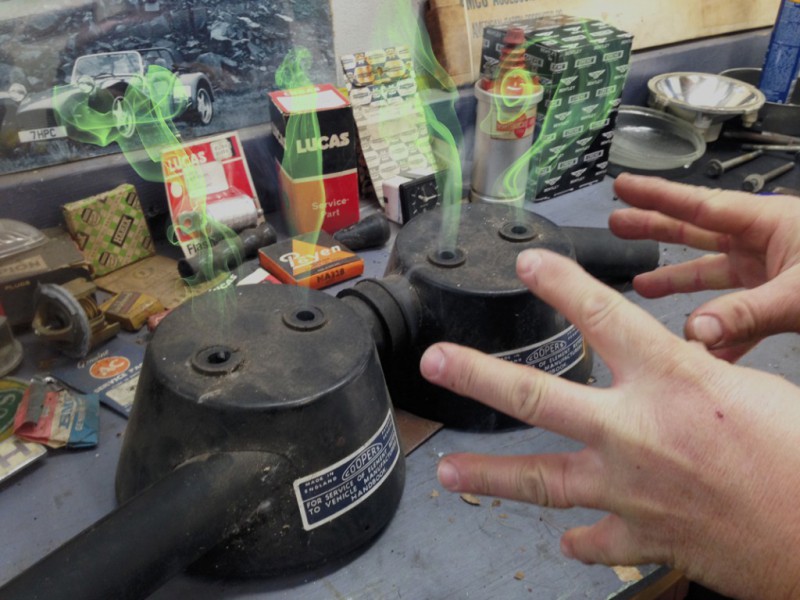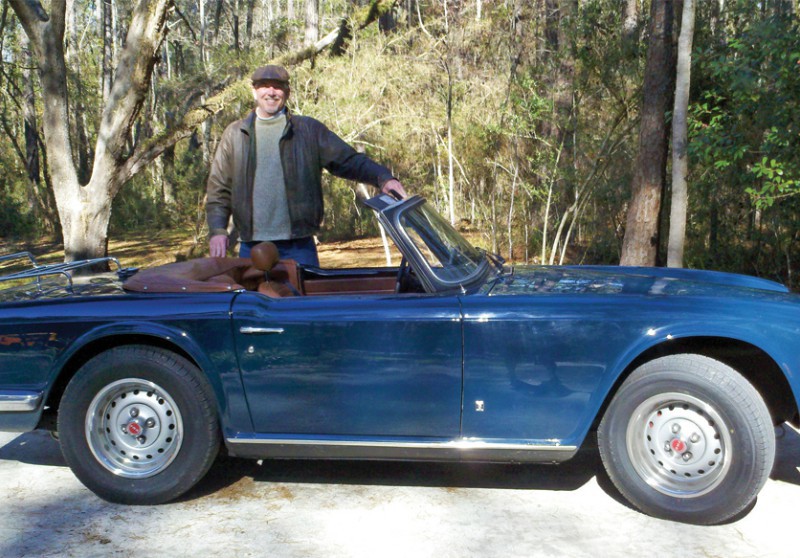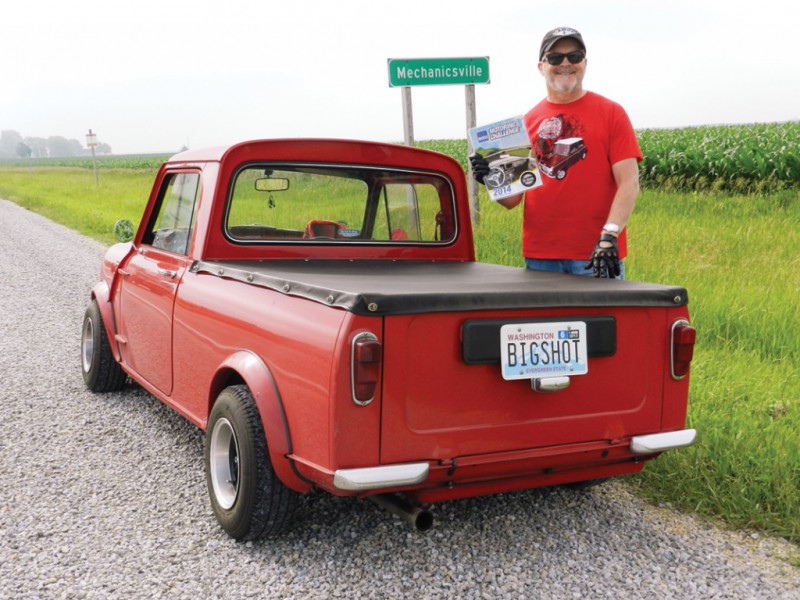“How could a car this small hold so much dirt, grease and oil,” I thought as I alternated between applications of degreaser and a paint scraper to the firewall of the little car. It was obvious after pulling the head off of the 998cc A-Series engine that the tappet chest cover gaskets were leaking and the oil mixed with overzealous lubrication and road dirt combined to make a black concrete-like substance. “There really ought to be word for this stuff,” I mumbled to myself as I noticed the growing pile of muck under the Mini.
Surprisingly to most people that hear this tale, this was not a step in a restoration of my 1973 New Zealand-built Mini. Instead, it began with the failure of the head gasket during a late fall afternoon pleasure drive along Mobile Bay in south Alabama.
After nearly ten years of trouble-free driving, the Mini had to be hauled on a rollback to my favorite local shop for a firm diagnosis. Richard Cunningham, proprietor of Classic Motorcar Services in Daphne, Alabama, confirmed his suspicion with a compression check. Having known Richard for nearly twenty years, he kindly allowed me to assist in the teardown and eventual repair.
Removal of the head made it easier to find the nagging exhaust blow (loose pipe clamp) and allowed me to clean up a few otherwise unreachable areas. While the head was out for a skim, we painted the intake/exhaust manifold, cleaned up and painted the radiator and shroud and knocked the top layer of crud off the accessible parts of the engine room.
While we were deep in the scraping, blasting and painting of various Mini bits, Richard casually mentioned that it would be a snap to remove the front subframe with the engine block and drive axles in place. This is from a guy whose quick underbonnet cleanup project turned into a six-year full restoration of his already nice 1964 Jaguar E-Type. Anyone who owns and occasionally wrenches on their classic British car well understands the slippery slope called Might as Well.
I tried to feign a temporary loss of hearing but Richard was enthusiastic over the possibilities. “We can get to everything on the subframe. I checked the Moss catalog and they’ve got all of the bushings, boots, ball joints and stuff we would need to make it right,” he said with a bit of a wild stare. “It would be FUN.” The die was cast.
The next weekend we were using the shop’s lift to raise the body off of the front subframe, and it went remarkably well. Everything was on the subframe just as Sir Alec intended. Richard was right, in that we could now really get things cleaned up and painted. Lifting the engine block out of the subframe, Richard remarked, “We should probably have a look at the clutch, too.” Even though the clutch seemed to be OK, I heard myself say, “Might as well.”
We removed the drive axles and as I started to put them away for safekeeping, Richard said, “Hey, we need to have a look at the bearings, too. Moss has an improved bearing kit that looks like it would be a snap to install.”
“Might as well,” I sighed.
So now the Mini is outside getting its engine bay cleaned and ready for a paint touchup and the head gasket job that I thought could take a few days to do is stretching into its second month. But Richard and a group of friends in the South Alabama British Car Club have really pitched in and helped out by washing parts, sandblasting, painting and generally doing anything that needs to be done. The friendship of guys like that is one of the best parts of owning a classic British car.
It seems that whenever a maintenance project is underway it becomes a call-to-arms and the call is almost always answered by fellow enthusiasts anxious to pay it forward and get someone else’s grease under their nails for change. I’ve seen this firsthand in the strip out and repaint of an MG Midget engine bay, the disassembly of a Triumph TR6 in preparation for a body off frame restoration and other smaller projects that rally the troops. Pleasant banter and occasional ribbing keep the atmosphere light even when an especially tough task (like removal of mildly corroded cotter pins from the brake and clutch pedal clevises on a Mini) tests the limits of a home mechanic’s patience.
As of this writing, the parts we need to reassemble the components to the subframe (and the subframe back on the car) are on order. It’s hard not to act like a kid anticipating the arrival of Santa Claus but the excitement is similar. After renovating an MGB nearly 18 years ago I can well remember the satisfaction of actually putting things back together after having had them apart for so long.
Daydreams of improved ride and handling weaved their way through my thoughts as the powerwasher did its work. “Hey,” Richard says, “new brake and clutch hoses are not at all expensive for this car. We should probably do them while it’s apart.”
All together, now: “Might as well.”
The day’s scraping and washing is over and as we push the now two-wheeled Mini back inside for the evening, I hear a familiar voice say, “It really wouldn’t take much to strip everything off for new paint, you know.”
By Rodney McDonald











'Might As Well' has no comments
Be the first to comment this post!